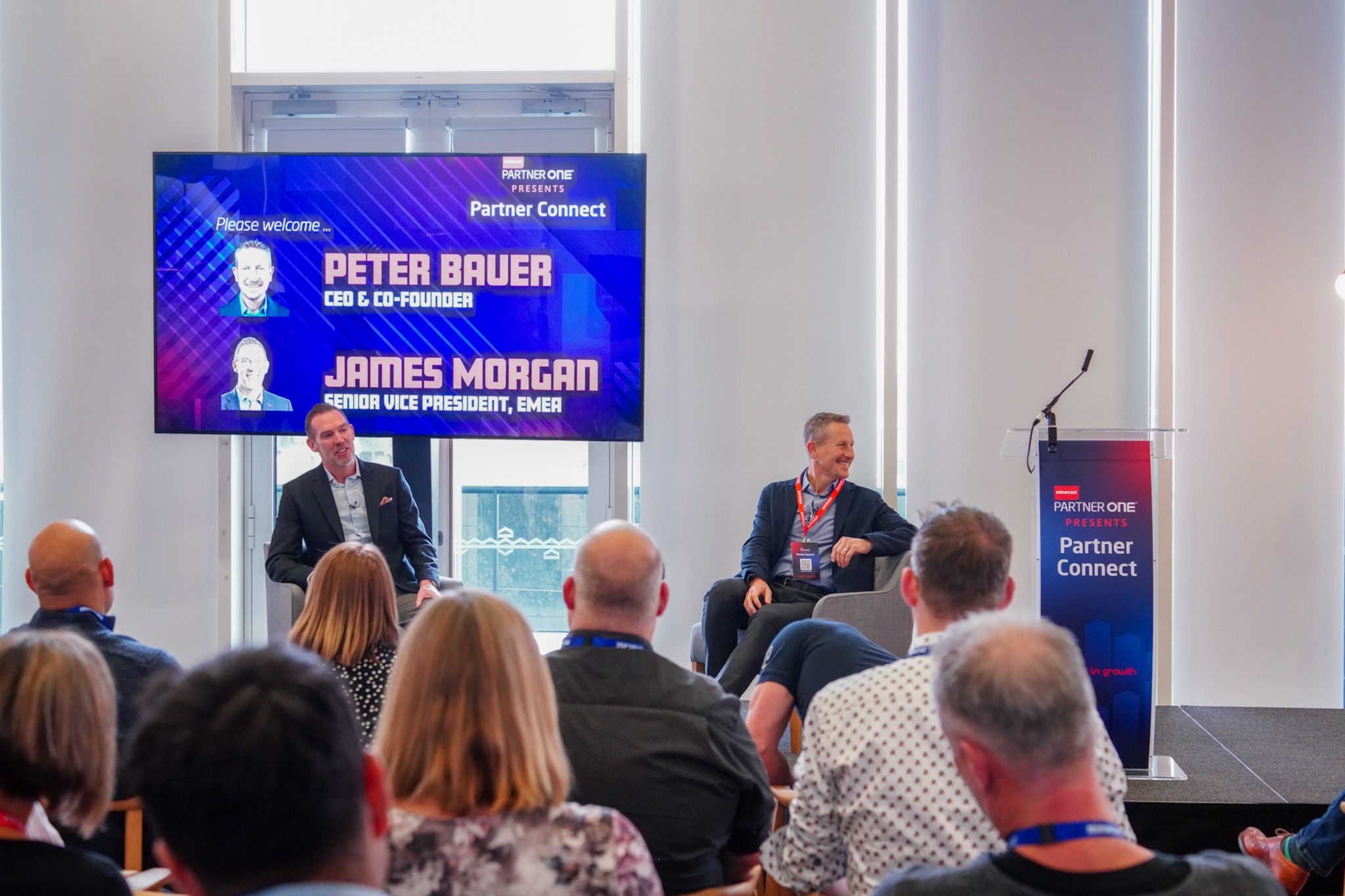As a long-standing and successful partner of Mimecast, we were pleased to attend the Mimecast Partner Connect Event. Held at the Queen Elizabeth Olympic Stadium, it was a day filled with interesting ideas, news, and discussions. We were also privy to exciting insights into Mimecast’s vision for the future of email security. The day started with two keynotes, followed by a series of breakout sessions. Here are some of our favourite takeaways from the event:
Mimecast’s Vision
Kicking off the sessions, Peter Bauer, CEO and Founder of Mimecast, and James Morgan, Senior Vice President for the EMEA region, took centre stage for a captivating chat. They delved into Mimecast’s transformation journey and shared insights into the company’s vision.
Between them, they began by outlining why email security is so important nowadays. In short, email is the biggest part of most companies’ ‘work surface’ – which is the collection of apps and platforms the average user needs to carry out their work. According to Mimecast’s insight, email is particularly attractive to attackers because it ‘connects to the human being,’ allowing hackers to levy attacks which appeal to emotion and, in some cases, may be highly personalised to the recipient.
Together they went on to discuss Mimecast’s vision. Not only have the company been working on integrating AI throughout their systems, enabling them to leverage decades of email security data, but they are also championing their partner alliance. This shows their continued commitment to their partner channel – at Mimecast, their partners, their customers, and they themselves operate as a team.
The Realities of Integrating AI into Email Security
The next keynote to follow detailed how Mimecast are integrating artificial intelligence and threat intelligence.
This session highlighted some of the key challenges you could face when integrating AI with threat intelligence. Efficacy, which involves balancing functionality with usability, was a hot topic. When this balance isn’t achieved, issues like alert fatigue and alert suppression can be seen.
Another issue that was addressed – relating specifically to the integration of AI – was that of drift. This is where the performance of an AI model gets worse over time, due to changes to the problem space it was designed to address. With cyber-crime constantly changing, it is possible for any given AI model to become less adept at identifying it over time.
This session focused on the importance of building AI-powered systems that leverage models to solve specific problems, and which can be trained, and more importantly re-trained, with both historical and new data.

Microsoft 365 and Mimecast
Throughout all the sessions we attended, there was a consistent theme: The strong relationship between Mimecast email security and the Microsoft 365 productivity stack. During one session it was detailed how Microsoft 365 has grown to become an essential part of many organisations’ infrastructure, and how that makes it an attractive target for malicious actors.
Mimecast’s email security has been a leading partner of Microsoft 365 for over a decade. This is precisely what led Microsoft to develop their new solution, Mimecast Email Security Cloud Integrated. A solution optimised for Microsoft 365 and featuring AI-powered detection.
Mimecast also touched on, Mimecast Email Security Cloud Gateway, their solution built for compatibility with all major email providers.
An interesting dynamic across several sessions was the contrast between organisations seeking to consolidate their infrastructure with solutions like Microsoft 365, and organisations seeking to diversify their infrastructure with best-in-breed point products. In both types of scenarios, Microsoft 365 has a significant role to play – but not all businesses place it at the core of their infrastructure.
Mimecast Partner ONE Alliance
Included in the talks was a panel session with some of Mimecast’s Technology Alliance Partners – a network of other security solutions vendors who have worked with Mimecast to develop valuable and seamless integrations between their products.
The consensus among these security experts was that diversifying with solutions from different vendors doesn’t have to be complex and difficult to manage. According to the panel, the benefit of working with two or more Alliance Partners is that you develop a more secure vendor ecosystem – comprised of solutions that communicate with one another – and additional layers of protection across the attack chain.
Conclusion
Babble’s day at Mimecast Partner Connect was both valuable, insightful, and fun. On top of some great catering and goodie bags for each attendee, there was lots of great thought leadership shared on the future of email security. We were also introduced to a whole raft of valuable customer insights shared with the partner community.
One of the most interesting themes was the comparison of different approaches to building secure infrastructures. Some organisations prefer to consolidate their infrastructure around ecosystems like Microsoft 365, while others prefer the complexity of an infrastructure built with best-of-breed security and productivity solutions.
At the end of the day, we feel there is no right or wrong answer to this. However, it is evident that the Microsoft 365 platform, which is now so present in the business community, is becoming the most profitable target for bad actors. This is a concerning trend for our customers and one that all organisations must be mindful of.





